- Home
- Clive Cussler
The Sea Hunters II: More True Adventures with Famous Shipwrecks Page 2
The Sea Hunters II: More True Adventures with Famous Shipwrecks Read online
Page 2
A soldier from George Washington’s army by the name of Ezra Lee volunteered to become the first man in history to attack a submarine against a warship. The target was British Admiral Richard Howe’s flagship, the frigate Eagle, which was lying in the Hudson River off Manhattan Island. The Turtle worked flawlessly. Lee gave it his best shot and came within a hair of becoming the first submarine to sink a warship, but, unable to see underwater at night, he failed to deploy the explosive device properly. Its attaching screw struck an iron bracket holding the rudder instead of the soft copper nailed to the hull. Unable to attach the gunpowder container, Lee aborted the mission.
A second attempt was made, but Lee dove too deep, and the current was too strong for him to make headway. The third and final effort failed when the British sentries fired on the craft as it escaped. A week later, a British sloop fired on and sank the sloop carrying the Turtle up the Hudson River. The British failed to recognize the Turtle as an advanced instrument of war and left it aboard the half-sunken sloop.
In a letter written by Bushnell to Thomas Jefferson, he stated that he had raised the Turtle but, in his words, “was unable to prosecute the design any further.” Bushnell then experimented with floating mines in the Delaware River, with little success. After the war, he entered medicine and became a physician, practicing while teaching at an academy in Georgia. He died in 1824 at the ripe old age of eighty-five, without leaving a clue as to what he did with the Turtle.
After he recovered it from the Hudson River, did he take it back to Saybrook and scuttle it in the Connecticut River, or did he simply chop it up into firewood and burn it to keep it out of British hands? Neither he nor his brother Ezra left any mention in their correspondences regarding the fate of the famed Turtle.
And so the world’s first practical submarine became lost in the mists of time.
Well aware that it was an exercise in futility, we decided to make a search of the Connecticut River where Bushnell had built the Turtle, desperately clinging to the notion that if you don’t seek, you won’t find.
After our routine consultation with local historians, who were as much in the dark as anyone else about what Bushnell had done with the Turtle, we studied a working replica of the submarine that had been re-created by Frederic Frese and Joseph Leary at the Connecticut River Museum at Essex. The two men had actually performed open-water dives in it. Having soaked up all the available data on Bushnell and his extraordinary vessel, we then launched our boat and began a sidescan survey up and down the river. We were lucky to have a ballpark grid in which to search, since the house where David and Ezra Bushnell had lived while building the Turtle still stands about two hundred feet from the river’s west bank. We did not use a magnetometer, because there was very little iron on the Turtle for it to detect. The ballast was lead and the hatch and fittings mostly brass.
We swept the entire river a good mile in either direction from the Bushnells’ construction site. But the sonar recorded nothing that remotely resembled the Turtle. If Bushnell did indeed scuttle the Turtle off his old workshop — and that is a very big if — it could lie under a four-acre swamp that is impenetrable to man or boat, or it could be covered over with silt. Should that be the case, every target recorded by the magnetometer, no matter how small, would have to be dredged. It’s not an impossible situation, but it is costly and most inconvenient.
Once again, we chalked one up to disappointment. As we are so fond of saying in the shipwreck business, “We still don’t know where it is, but we well know where it ain’t.”
* * *
Those are the defeats, and they’re pretty frustrating. It’s the occasional successes that inspire us to sail onward.
Some of them we described in the first Sea Hunters, and some of them are in this book (though they’re not all successes, as you’ll see). But probably the most satisfying one of all was the discovery of the Confederate submarine Hunley and her heroic crew, hidden in the silt off Charleston, South Carolina. I was convinced she had to be there, even though several NUMA search expeditions had failed to find her, and I simply refused to give up.
The story of her discovery was told in the first Sea Hunters. After running 1,154 miles of search lanes dragging a magnetometer sensor, an anomaly that indicated the mass and dimensions of the Hunley was finally discovered. Marine surveyor Ralph Wilbanks and marine archaeologists Wes Hall and Harry Pecorelli III then excavated and made a positive identification of the long-lost sub.
If we hadn’t found it in May of 1995, I’d still be out looking for it.
What couldn’t be told then is what happened afterward. Due to the efforts of South Carolina state senator Glenn Mc-Connell, and of Warren Lasch — who launched the Friends of the Hunley and acquired the funds to raise and preserve the vessel so future generations may view this remarkably advanced craft that became the first submarine in history to sink an enemy warship — the Hunley was raised from the water.
The day she was lifted from her watery shroud of 28 feet and saw the sun for the first time in 136 years, no one present will ever forget.
The recovery team, the true unsung heroes in the drama, labored for months in round-the-clock shifts, excavating and building a truss around the hull so it could be lifted onto a barge. This was no easy feat, especially when it was found that the sub was filled with silt that quadrupled its weight. The international salvage companies that performed the magnificent recovery effort and directed the lift were Oceaneering and the Titan Corporation.
When the moment came, the lifting cables became taut, and the little submarine began to rise from the silt where she had lain for so long. There was hushed expectation from the divers, the engineers, and the thousands of people who had gathered in hundreds of boats for the landmark event. Every eye was on the huge crane that stood on the great salvage barge, its own great pilings driven into the sea bottom. When the sub’s dripping hull, supported by the truss and foam cushions, appeared under a cloudless blue sky, cheers, whistles, and air horns shattered the early-morning calm, while the stars and bars of the Confederacy flew from a forest of masts.
Standing on the press boat and leaning over the railing, I felt an indescribable thrill. Finally, I would lay eyes on her. My son, Dirk, friend and cowriter Craig Dirgo, and I had hoped to dive on her soon after Ralph, Wes, and Harry made the discovery, but several days of rough weather and high seas beat us out. By then it was too late. A Charleston press conference was scheduled to announce the discovery, and we could not venture to the site again for fear of giving away her location to shady Civil War artifact collectors who were already offering $5,000 for a hatch cover and $10,000 for the propeller to anyone who would dive to the wreck and remove them. The Hunley hung poised and elegant, coated in rust and ancient sea life that had attached to her iron plates before the silt covered her entirely. She was gently lowered onto a smaller barge and then towed by two tugboats on her final, belated voyage into Charleston Harbor. Flags on Fort Sumter were lowered to half-mast, as reenactors in authentic Civil War uniforms, both Union and Confederate, shot volleys to the sky, accompanied by muzzle-loading cannon, whose salutes filled the air with puffs of black powder smoke. Women lined the shore wearing antebellum dresses, nine of the garments black in honor of the submarine’s nine dead crew. Thousands of spectators lining the shores cheered as the barge, with its precious cargo, and the fleet of pleasure craft made their way past the town Battery and up the Cooper River to the old navy yard.
The men behind the project had pulled off an amazing feat. The entire operation had gone as smoothly as a ticking clock on the dashboard of a Rolls Royce. A crane lifted the sub off the barge onto a rail car that carried her into the Warren Lasch Conservation Center, where she will spend the next several years in a tank. Here, during her preservation process, her hull plates will be removed so the interior can be excavated and all artifacts and the crew’s remains can be removed and studied. Eventually, Hunley, in all her glory, will be put in a museum for permanent publ
ic display.
I was numb with disbelief and exhilaration that the event had actually happened, as numb as I was the day five years earlier when Ralph Wilbanks had awakened me at 5 A.M. and told me he wasn’t going to search for the Hunley anymore — because he and Wes and Harry had just touched its hull!
Dr. Robert Neyland, the naval archaeologist who was in charge of the investigation, graciously allowed me to go up now and touch the sub. After fifteen years and a share of my children’s inheritance spent on the long search, I felt as if an electric shock were running through me as I laid my hands on the propeller. Close up, the vessel looked longer and narrower than I had imagined, far more streamlined and aerodynamically designed to reduce water resistance than anyone had suspected. Hunley was truly a marvel of Civil War engineering and technology.
A photographer asked Ralph, Wes, Harry, and me to stand in front of the sub as it hung suspended in its sling, before it was lowered into the preservation tank. After we posed for a few minutes, the entire building suddenly erupted in cheers and applause. Totally unexpected, it was truly an emotional and cherished moment, a fulfillment of a dream. We all fought back the tears, proud that this moment existed because of us. The years of effort and expense had been worth it.
But, as with a triumphant army after a great victory, the moment soon passed. That was then. Now is now. It was time to plan the next expedition in hopes of finding another historically significant shipwreck.
Perhaps it’ll be the Pioneer II—or American Diver, as she was sometimes called. It was the predecessor to Hunley and was built by the same group of men in Mobile, Alabama. While being towed from the harbor in an attempt to sink one of the blockading Union fleet, she was hit by a squall, and she began to take on water through an improperly sealed hatch until she slipped under the waves. Fortunately, none of her crew accompanied her into the deep. Scientists and archaeologists are anxious to see the technology that was used as a foundation to modify and refine the Hunley into an undersea vessel considered state-of-the-art in 1863.
We’ve just received a permit from the state of Alabama to conduct a search and excavation. Yes, we’re positive this is another wreck that is buried deep in the sand and silt, and so is probably unrecoverable. But if we never make the attempt, we will never succeed.
Much water has passed the bows since Craig Dirgo and I wrote the first Sea Hunters. Since then NUMA has found the wrecks of Carpathia, the ship that rescued Titanic’s survivors and was torpedoed by a German U-boat six years later; the General Slocum, an excursion steamboat that burned and sank in the East River of New York, with a loss of more than one thousand people, mostly women and children; and the Mary Celeste, the famous ghost ship that was found floating off the Azores in 1876 with no one on board, the first great mystery of the seas.
The following narratives chronicle the most recent searches by NUMA crews who dragged sensing equipment through eight-foot seas, found themselves inundated by tidal waves, dove in water so dirty they couldn’t see the fingernails on the hands in front of them, and excavated tons of mud and sand under the worst conditions imaginable, all in an effort to identify a long-lost shipwreck. The people who are portrayed here, both past and present, were and are real. The historical events depicted are also factual but have been slightly dramatized to make the ships, and all who voyaged in them, more immediate to today’s reader.
There is no monetary profit to this ship-hunting madness. I do what I do purely out of a love for our country’s maritime history and to preserve it for future generations. It’s rich and worth cherishing.
Each day is future history. So don’t step lightly. The trick is to leave tracks that can be followed.
PART ONE
L’Aimable
I
The Father of Waters 1684–1685
“The fool!” René-Robert Cavelier de La Salle shouted as he stood helpless on the desolate shore and watched his flagship, L’Aimable, veer out of the buoyed channel toward what he knew was certain destruction.
Earlier, over the protests of L’Aimable’s captain, René Aigron, La Salle had ordered the 300-ton French ship loaded with stores for a new colony to sail across the bar of Cavallo Pass into Matagorda Bay — a body of water that would become part of the state of Texas 157 years later.
Aigron stared menacingly, demanded La Salle draw up a document absolving him of any responsibility, and insisted the explorer sign it. La Salle, still recovering from an illness, was too weary to argue the point and reluctantly agreed to the terms. Fearing the worst, Aigron then transferred his personal possessions to a smaller ship, Joly, which had already crossed the bar and was safely anchored inside.
Now, with the sails unfurled and billowing from a following breeze, L’Aimable, to the horror of La Salle, was sailing into oblivion.
* * *
The man who would claim the new world for France was born in Rouen, France, on November 22, 1643. After an unsuccessful attempt to become a Jesuit priest, he left France seeking a new life in New France, now known as Canada, then a French colony. After a few false starts, La Salle established a thriving fur-trading business, an endeavor that allowed him to develop his budding passion for exploration.
When Louis de Buade Comte de Frontenac became the new governor of Canada, La Salle nurtured a friendship with him. In time, the Canadian governor introduced La Salle to King Louis XIV, who granted the explorer a patent, or royal license, to explore the western regions of New France. In effect, La Salle now became France’s approved explorer in the New World. La Salle, in debt, wasted little time before exploiting the honor.
Expanding his fur trade to the west and into Lake Michigan, La Salle set out to change the way the business was conducted. Most fur trappers headed into the wilds until they had secured sufficient pelts to load a birch-bark canoe, then they set off on a long journey to a major town where they could sell their bounty. La Salle saw that the Great Lakes needed larger vessels, so he built one. In August 1679, he launched Le Griffon, a rigged vessel of sixty tons mounting seven guns, into Lake Erie. Griffon amazed the Indians in the area, who had never seen a large ship. Unfortunately, the vessel was not long for this world.
In defiance of Louis XIV’s order not to trade with the Indian tribes in the western regions, La Salle set out to do just that. After transporting people to Fort Michilimackinac, near where Lake Huron and Lake Michigan meet, Griffon was sent across Lake Michigan to Green Bay. There the ship was loaded with furs and goods for the trip back to Fort Niagara at the eastern end of Lake Erie.
With no explanation, Griffon disappeared into the mists of history.
The loss of Griffon, and another ship loaded with supplies in the Saint Lawrence River, brought La Salle to the edge of financial ruin. To complicate matters, in 1680, just after the loss of the ships, the men assigned to La Salle’s Fort Crèvecœur at the mouth of the Illinois River mutinied and destroyed the outpost. Never lucky, La Salle saw his world collapsing.
Rather than admit defeat, he pressed on with his plans to discover the mouth of the Mississippi River. In February 1682, La Salle started down the upper waters of the Mississippi in an expedition consisting of twenty elm-bark canoes. By March, the expedition had reached present-day Arkansas and established contact with the Indians, who welcomed the French explorers. With the weather improving, the expedition pressed south, and on April 6 they finally reached the mouth of the great river.
La Salle was a pompous man given to ego, and the ceremony on April 9 reflected this. Standing next to a towering live oak and dressed in scarlet robes, La Salle had the men sing hymns while standing in front of a cross that had been carved from a large pine tree. Then he claimed all the land lining the Mississippi River for France.
In honor of the king he served, he called the land Louisiana.
Without a war and with hardly a single shot fired, La Salle made a claim to an area that doubled the size of New France. From the Appalachian Mountains to the east, south to the territories claimed by S
pain, the land comprised some 909,000 square miles.
Now he needed to establish a base far to the south so he could exploit his discovery for profit: a base far away from his growing list of enemies in New France and far from his creditors. La Salle’s friend Frontenac had been replaced as governor of New France by Antoine Levebre Sieur de La Barre, who, like most, cared little for the arrogant La Salle. His last chance was to return to France and convince King Louis XIV to support his efforts to colonize the southern end of the Mississippi River Valley. In this, he was successful.
On July 24, 1684, La Salle left France with four ships and four hundred colonists.
* * *
René-Robert Cavelier de La Salle never would have won a popularity contest.
On the lee side of Hispaniola Island in the country of Santa Domingo at the port of Petit Goave, the commander of the French thirty-six-gun warship Joly, Captain Andre Beaujeu, was airing his grievances about La Salle to Captain René Aigron of the supply ship L’Aimable. Aigron, whose ship was anchored off Port-de-Paix, was separated from the other ships of the fleet by a mix-up in orders. He had traveled by donkey to the other side of the island for the conference.
“La Salle is touched,” Beaujeu said. “First he refuses permission for us to stop in Madeira, then he bans the sailors from baptizing the passengers as we cross the line into the tropics. Those two rituals are time-honored nautical traditions.”

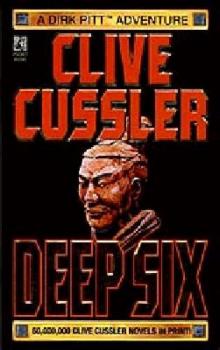 Deep Six
Deep Six Odessa Sea
Odessa Sea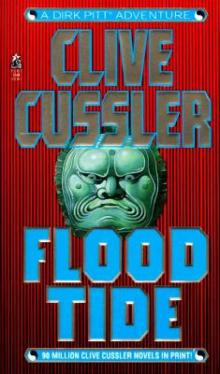 Flood Tide
Flood Tide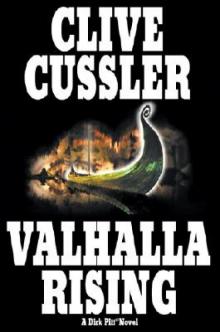 Valhalla Rising
Valhalla Rising Thriller 2
Thriller 2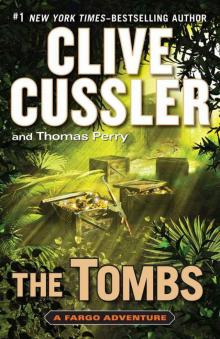 The Tombs
The Tombs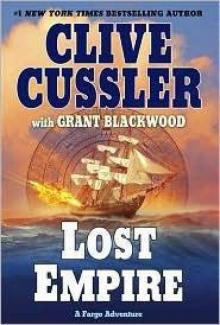 Lost Empire
Lost Empire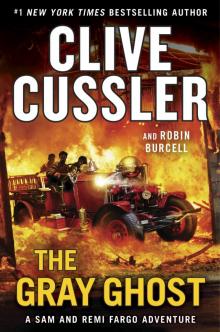 The Gray Ghost
The Gray Ghost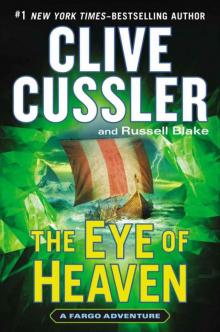 The Eye of Heaven
The Eye of Heaven Polar Shift
Polar Shift The Kingdom
The Kingdom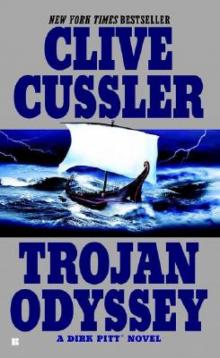 Trojan Odyssey
Trojan Odyssey Shadow Tyrants
Shadow Tyrants Nighthawk
Nighthawk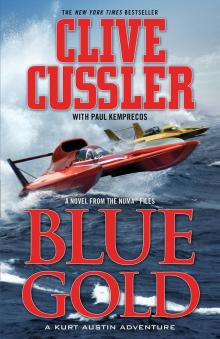 Blue Gold
Blue Gold Serpent
Serpent Lost City
Lost City The Gangster
The Gangster White Death
White Death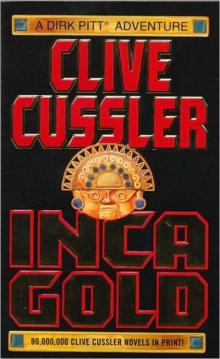 Inca Gold
Inca Gold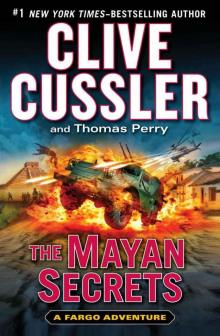 The Mayan Secrets
The Mayan Secrets The Pharaoh's Secret
The Pharaoh's Secret The Emperor's Revenge
The Emperor's Revenge Corsair
Corsair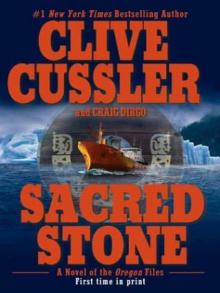 Sacred Stone
Sacred Stone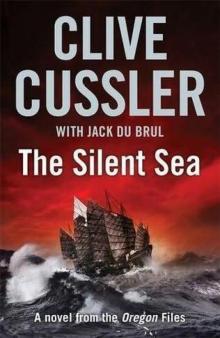 The Silent Sea
The Silent Sea The Rising Sea
The Rising Sea Black Wind
Black Wind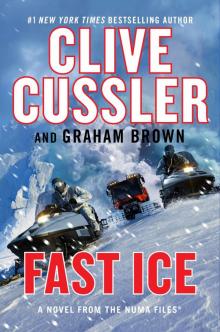 Fast Ice
Fast Ice Ghost Ship
Ghost Ship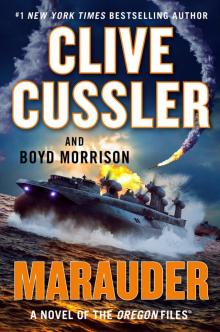 Marauder
Marauder The Thief
The Thief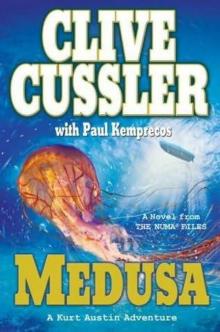 Medusa
Medusa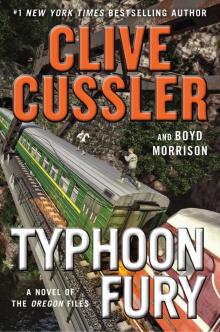 Typhoon Fury
Typhoon Fury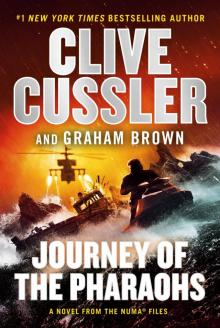 Journey of the Pharaohs
Journey of the Pharaohs The Navigator
The Navigator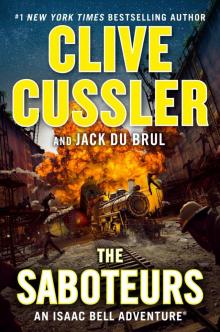 The Saboteurs
The Saboteurs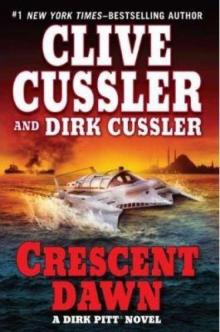 Crescent Dawn
Crescent Dawn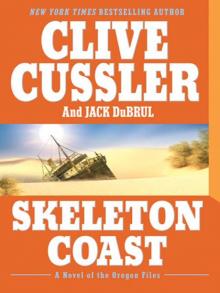 Skeleton Coast
Skeleton Coast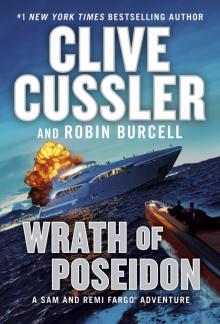 Wrath of Poseidon
Wrath of Poseidon The Mediterranean Caper
The Mediterranean Caper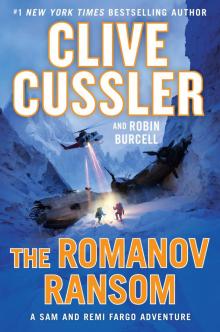 The Romanov Ransom
The Romanov Ransom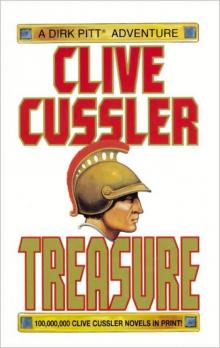 Treasure
Treasure The Race
The Race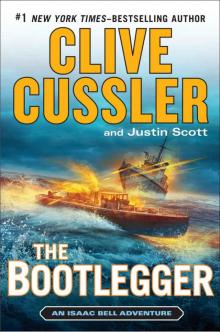 The Bootlegger
The Bootlegger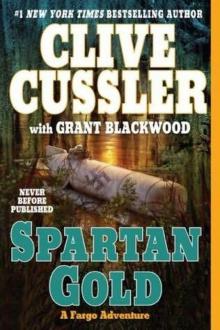 Spartan Gold
Spartan Gold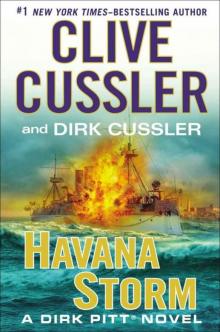 Havana Storm
Havana Storm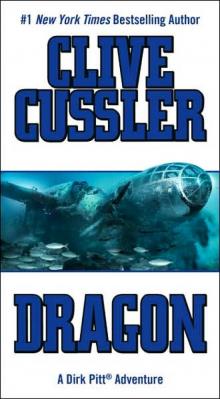 Dragon
Dragon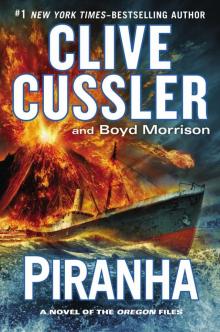 Piranha
Piranha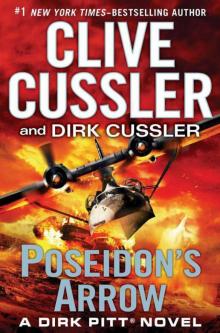 Poseidon's Arrow
Poseidon's Arrow The Cutthroat
The Cutthroat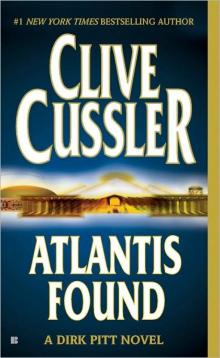 Atlantis Found
Atlantis Found The Jungle
The Jungle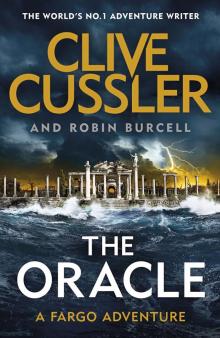 The Oracle
The Oracle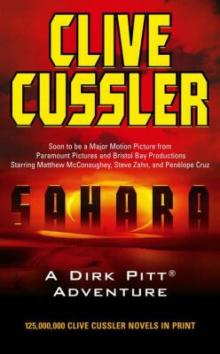 Treasure / Dragon / Sahara: Clive Cussler Gift Set
Treasure / Dragon / Sahara: Clive Cussler Gift Set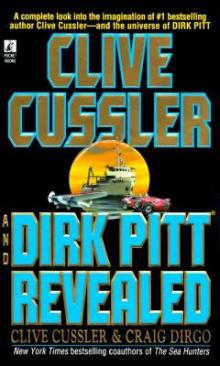 Clive Cussler and Dirk Pitt Revealed
Clive Cussler and Dirk Pitt Revealed The Sea Hunters
The Sea Hunters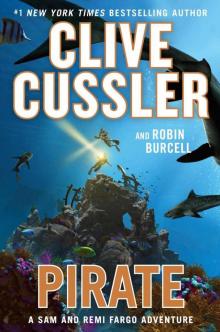 Pirate
Pirate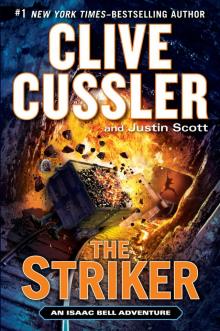 The Striker
The Striker Plague Ship
Plague Ship The Wrecker
The Wrecker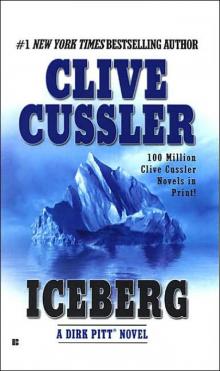 Iceberg
Iceberg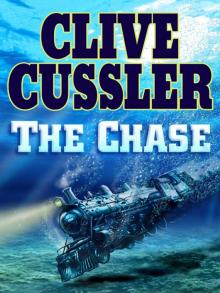 The Chase
The Chase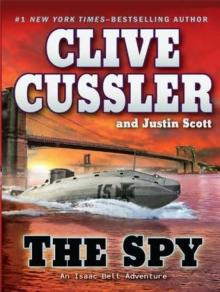 The Spy
The Spy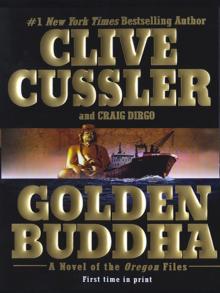 Golden Buddha
Golden Buddha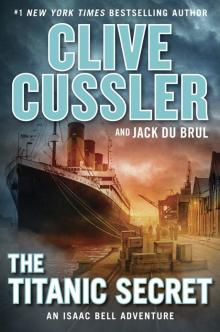 The Titanic Secret
The Titanic Secret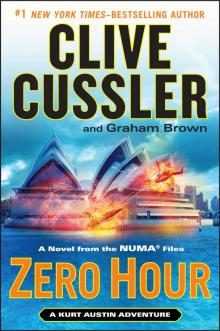 Zero Hour
Zero Hour Fire Ice
Fire Ice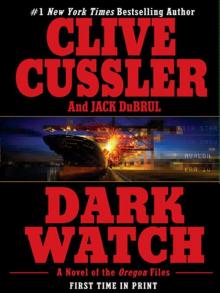 Dark Watch
Dark Watch The Storm
The Storm The Assassin
The Assassin Vixen 03
Vixen 03 Arctic Drift
Arctic Drift Night Probe!
Night Probe! Cyclops
Cyclops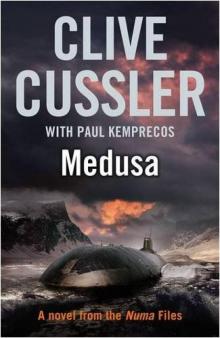 Medusa nf-8
Medusa nf-8 Shock Wave dp-13
Shock Wave dp-13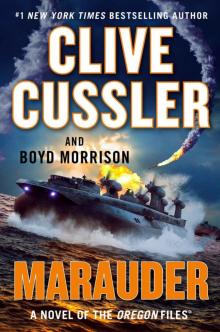 Marauder (The Oregon Files)
Marauder (The Oregon Files)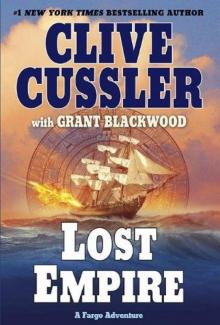 Lost Empire fa-2
Lost Empire fa-2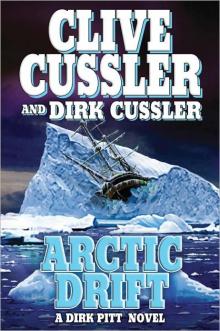 Arctic Drift dp-20
Arctic Drift dp-20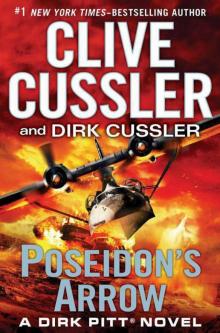 Dirk Pitt 22 - Poseidon's Arrow
Dirk Pitt 22 - Poseidon's Arrow Treasure of Khan dp-19
Treasure of Khan dp-19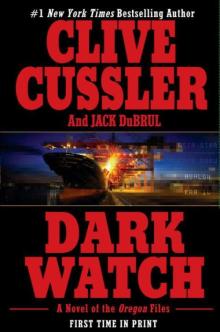 Dark Watch of-3
Dark Watch of-3 Devil's Gate
Devil's Gate The Sea Hunters II: More True Adventures with Famous Shipwrecks
The Sea Hunters II: More True Adventures with Famous Shipwrecks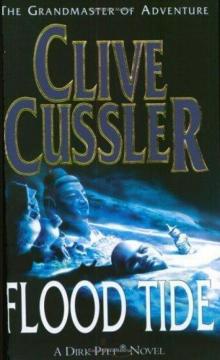 Flood Tide dp-14
Flood Tide dp-14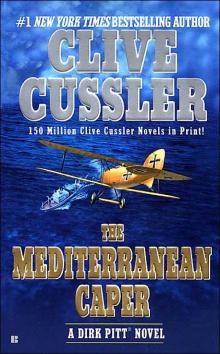 The Mediterranean Caper dp-2
The Mediterranean Caper dp-2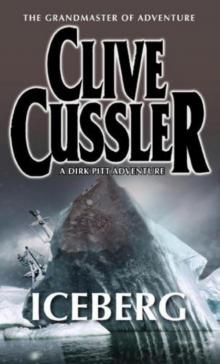 Iceberg dp-3
Iceberg dp-3 Sahara dpa-11
Sahara dpa-11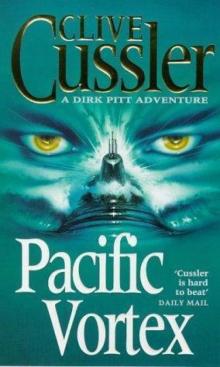 Pacific Vortex! dp-1
Pacific Vortex! dp-1 Deep Six dp-7
Deep Six dp-7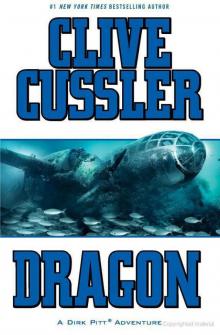 Dragon dp-10
Dragon dp-10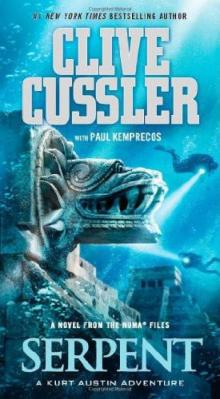 Serpent nf-1
Serpent nf-1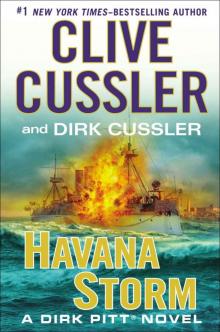 Havana Storm (Dirk Pitt Adventure)
Havana Storm (Dirk Pitt Adventure)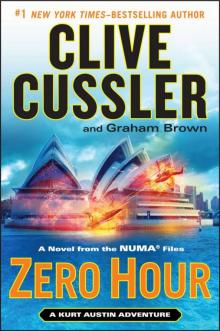 Zero Hour nf-11
Zero Hour nf-11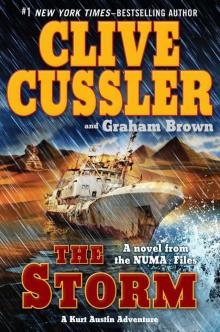 The Storm nf-10
The Storm nf-10 The Thief ib-5
The Thief ib-5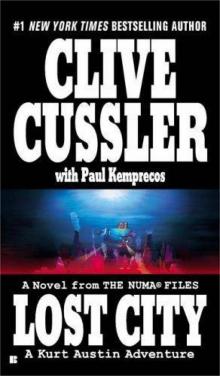 Lost City nf-5
Lost City nf-5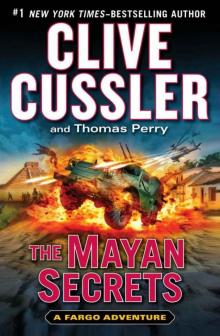 The Mayan Secrets fa-5
The Mayan Secrets fa-5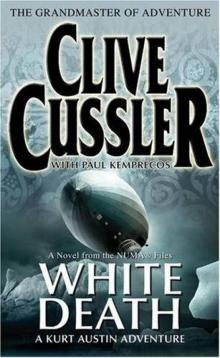 White Death nf-4
White Death nf-4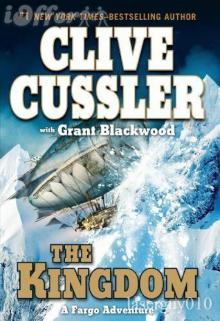 The Kingdom fa-3
The Kingdom fa-3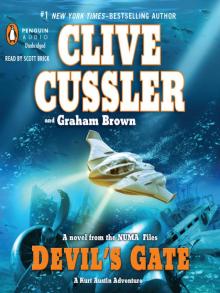 Devil's Gate nf-9
Devil's Gate nf-9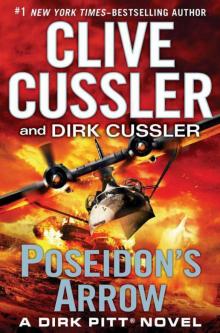 Poseidon's Arrow dp-22
Poseidon's Arrow dp-22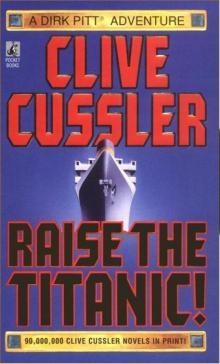 Raise the Titanic dp-4
Raise the Titanic dp-4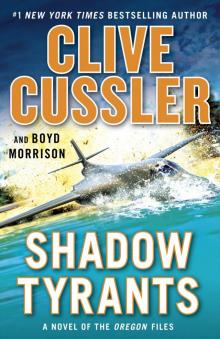 Shadow Tyrants--Clive Cussler
Shadow Tyrants--Clive Cussler Sacred Stone of-2
Sacred Stone of-2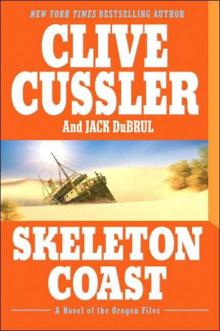 Skeleton Coast tof-4
Skeleton Coast tof-4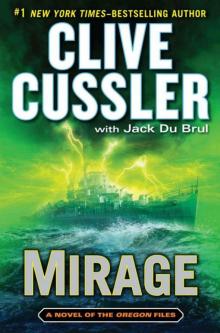 Mirage tof-9
Mirage tof-9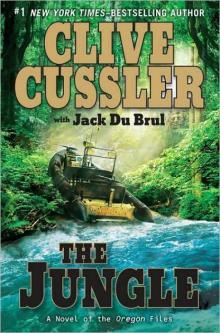 The Jungle of-8
The Jungle of-8 The Emperor's Revenge (The Oregon Files)
The Emperor's Revenge (The Oregon Files)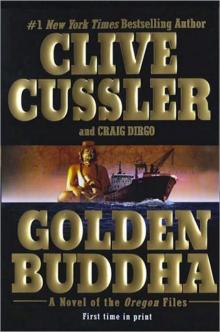 Golden Buddha of-1
Golden Buddha of-1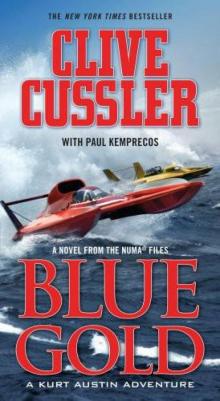 Blue & Gold
Blue & Gold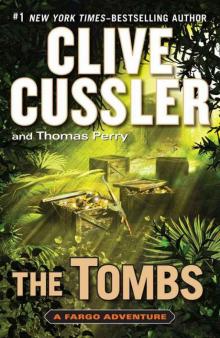 The Tombs fa-4
The Tombs fa-4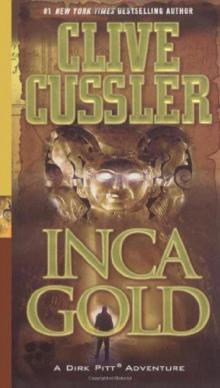 Inca Gold dp-12
Inca Gold dp-12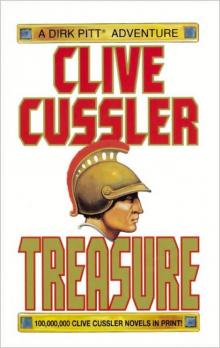 Treasure dp-9
Treasure dp-9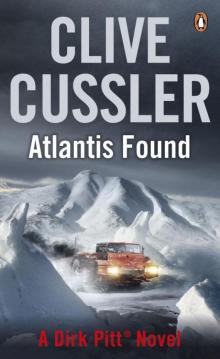 Atlantis Found dp-15
Atlantis Found dp-15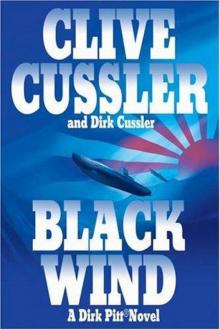 Black Wind dp-18
Black Wind dp-18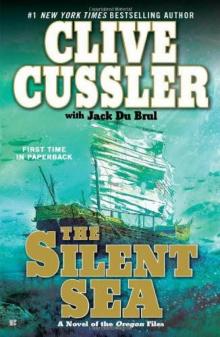 the Silent Sea (2010) tof-7
the Silent Sea (2010) tof-7 The Wrecker ib-2
The Wrecker ib-2 Fire Ice nf-3
Fire Ice nf-3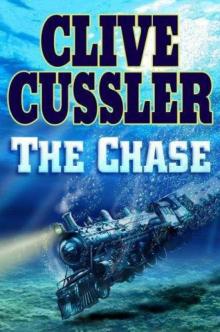 The Chase ib-1
The Chase ib-1 Sahara
Sahara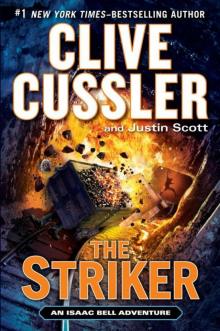 The Striker ib-6
The Striker ib-6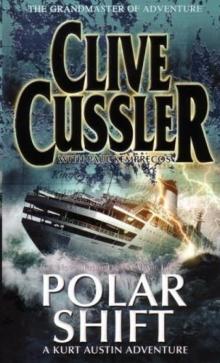 Polar Shift nf-6
Polar Shift nf-6 The Race ib-4
The Race ib-4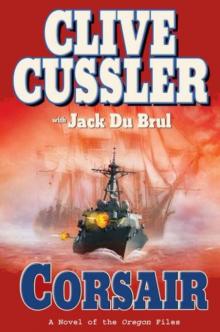 Corsair of-6
Corsair of-6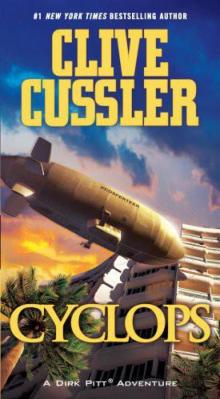 Cyclops dp-8
Cyclops dp-8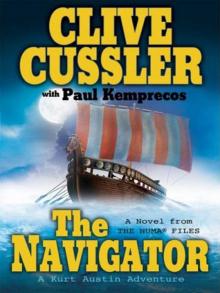 The Navigator nf-7
The Navigator nf-7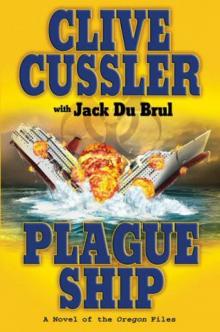 Plague Ship tof-5
Plague Ship tof-5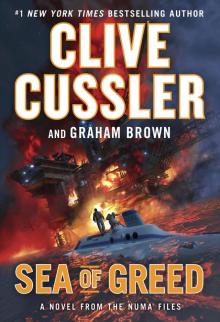 Sea of Greed
Sea of Greed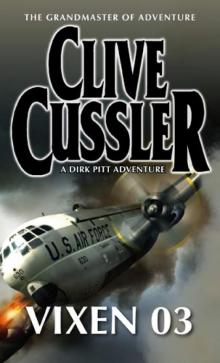 Vixen 03 dp-5
Vixen 03 dp-5 Thriller 2: Stories You Just Can't Put Down
Thriller 2: Stories You Just Can't Put Down